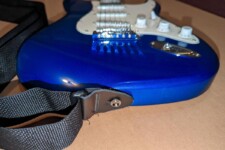11 Yamaha Silent Guitar Problems (And Solutions)
Yamaha Silent guitars are great for late night and early morning guitar playing when you don’t want to disturb others, and are mostly well designed.
I own two Yamaha steel string silent guitars and have found them quite reliable, with only a few minor problems showing up after years of use.
This doesn’t mean that these guitars are problem free though, as there are some common problems owners have with these guitars. There are also issues that are less common or just relate to the requirements individual players have for their instruments.
I have listed the problems that you could see with both old and new models of Yamaha Silent guitars, and solutions where possible.
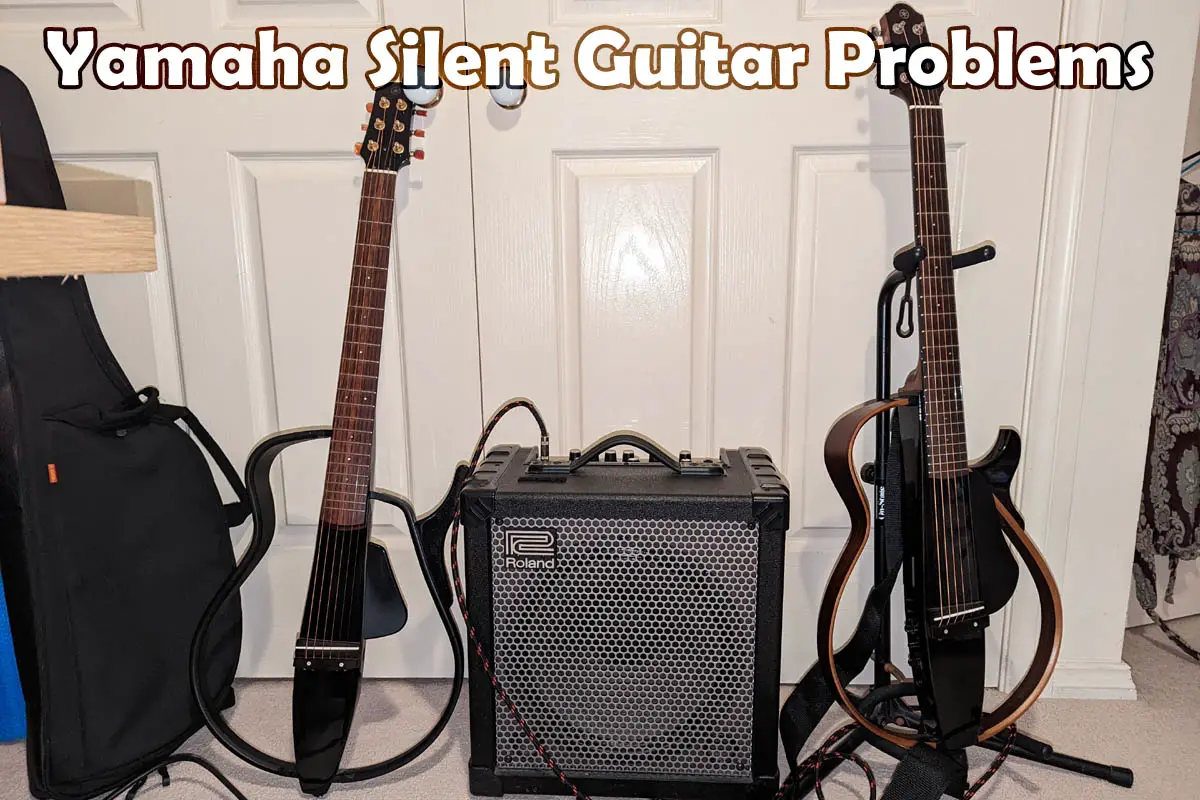
1. Frame Comfort
Some players complain that the upper frame is uncomfortable, cutting into their arm after longer playing sessions.
This can be due to the square edge on the outside of the frame, and it’s a little odd that Yamaha chose to bevel the inside edge rather than the outside.
Most players don’t have this problem, and it can directly relate to the position you play your guitar in, and length of play.
Frame Comfort Solution
One guitarist solved this issue by routing the outside edge of the top frame to a rounded comfortable shape.
2. Frame Locks Coming Loose
Unfortunately this is a very common problem, and happens on the first Yamaha Silent guitar models as well as the more recent ones.
This results in the upper frame starting to wobble as you play, and can sometimes make creaking sounds.
Most commonly this happens when playing the guitar standing with a shoulder strap attached. The frame locking pins double as strap pins, and the movement of the strap tends to loosen the frame locks.
The worst scenario is that one frame lock becomes so loose that the frame falls out of the guitar body at one end.
Frame Lock Solution
The only potential solution I have seen is to modify a strap lock and the frame lock pin, and you can see it in this video:
3. Neck Dive
Since Yamaha Silent guitars have a very light body they tend to be neck-heavy.
This is not so much a problem when sitting, but standing up becomes very noticeable and you need to hold the neck up with your fretting hand.
Neck Dive Solution
Using a leather strap can help, as they are more grippy on your shoulder than other strap materials, helping to keep the guitar in place.
You could also consider attaching another strap pin on the end of the heel, which would help slightly with the balance.
4. High Action
It seems many Yamaha Silent guitars come direct from the factory with high action.
This can affect intonation particularly at low frets, and can make the guitar difficult to play at higher frets. Some guitarists prefer higher action at the bridge, but many find it just makes for an unplayable instrument.
High Action Solution
Like any guitar that needs the action adjusted, the answer is to lower the saddle, and lower the nut (or file the nut slots deeper).
There is a piezo pickup under the saddle, so care needs to be taken to keep the bottom of the saddle perfectly flat when filing down the saddle so that it contacts the pickup evenly.
For most people the nut is best adjusted by a guitar tech, but if all strings are slightly high you could file the bottom of the nut down a little to lower the entire nut height.
5. Battery Life
Batteries are expensive, and if you play regularly using the onboard electronics you will find yourself changing the batteries frequently.
The older series used a 9v battery that had a tendency to suddenly let the electronics fail with crackling and popping sounds once the voltage dropped below a certain level.
For the earlier SLG110 series the batteries won’t last more than about 10 hours, and will run flat even if you left the switch turned on but weren’t playing.
The newer series use two AA batteries, and tend to slowly fade over time rather than letting the electronics suddenly fail like the old 9v battery design. There is an auto-off function if you aren’t using the guitar, but if you are playing then expect 12-15 hours before replacing them.
Battery Life Solution
The earlier SLG110 series came with an AC adapter, but the cord was only only 3 ft. long (90cm), barely long enough to reach the floor when sitting. I ended up cutting my adapter cord and soldering an extension in.
The newer SLG200 series doesn’t come with an AC adapter, but you can further support Yamaha by buying one from them.
6. Output Jack Angle
The SLG110 series had an output jack that was open to a straight or right-angle cable connector, but the newer SLG200 series restricts you to a straight connector due to the design.
Maybe not a big deal for most players, but can be a minor inconvenience for some.
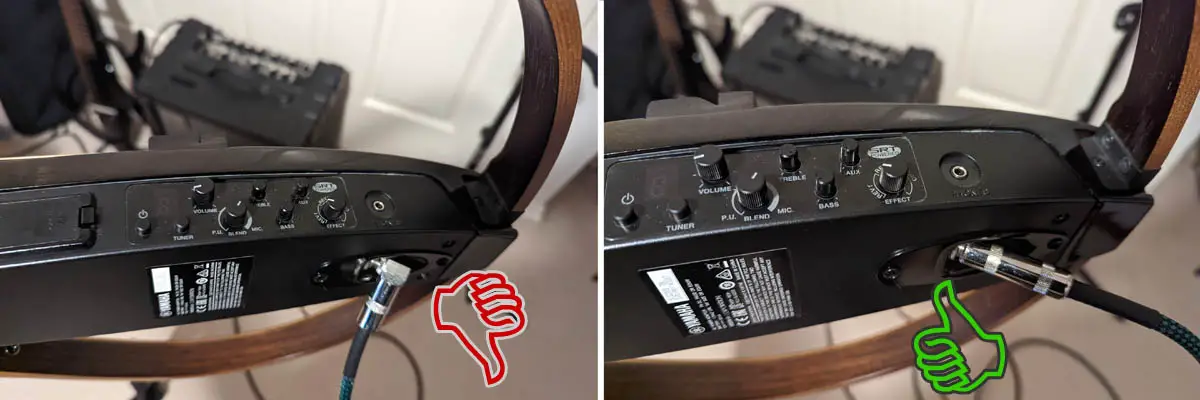
Output Jack Angle Solution
None, Jack! Just use a straight ended plug.
7. Bridge Shift
The bridge on Yamaha Silent guitars has been known to slip over time, and even pull up from the guitar body.
Some luthiers have fixed quite a few of these, and it seems to be due to glue that wasn’t strong enough, not enough glue, or possibly the conditions the guitars were stored in?
On my older SLG110S you can see a small gap between the bridge and paintwork, showing the bridge has slipped a little over time.
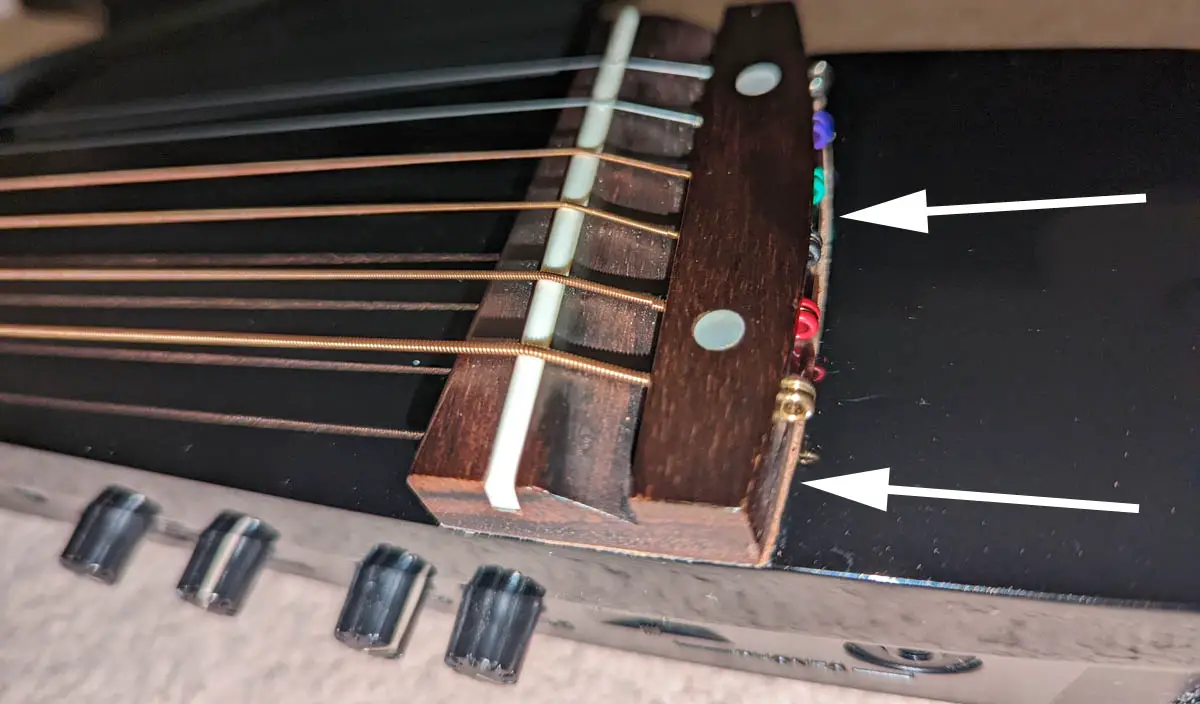
I have always stored my guitars well, and been careful to de-tune a little before flying with them, so I think this may be more the older series of guitars that have this problem.
Bridge Shift Solution
There are two screws underneath pearl caps, and these could be replaced with heavier gauge screws.
For bridges that have already moved or lifted, you would need a professional repairer to re-attach the bridge. To help prevent bride lift, make sure to store these guitars within normal humidity limits of around 45-60%.
8. Control Visibility
Both the old and newer models suffer this problem, but in different forms.
The SLG110 series has clear marks on the knobs so you know which way they are facing, but the writing showing what each button does is only raised black plastic. In anything but brightly lit rooms, you cannot read the writing.
The SLG200 series has clear writing to indicate what each knob does, but the treble, bass and Aux knobs have no white line to indicate which way they are facing. Hope you are good at guessing.
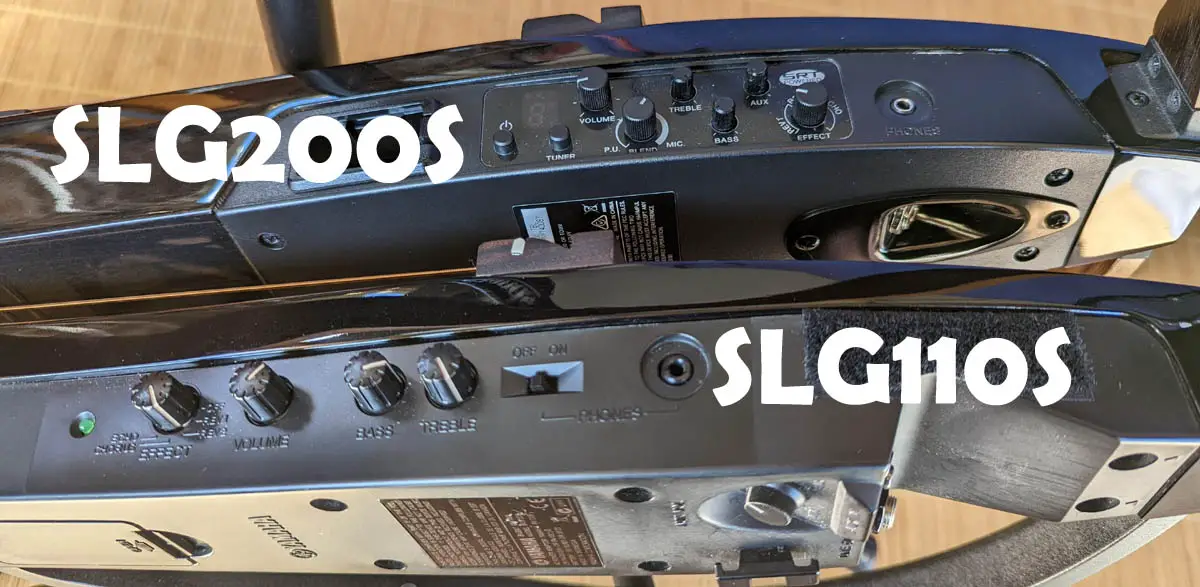
Control Visibility Solution
For the SLG100 series, you could dab a piece of foam in white paint, and carefully dab it on the raised writing near the knobs.
For the SLG200 series, try using a toothpick dabbed in white paint and carefully slide the sharp end through the small indent on the three knobs.
9. Cutaway Body Design
The older SLG100 series neck was designed well with a smooth transition into the body making high frets accessible for playing.
However, the SLG200 series has a big boxy joint where the neck meets the body at the 14th fret.
This makes the high frets harder to play on with the newer models, since there is a very square shaped box sticking out.

Cutaway Body Design Solution
If this is a problem for your playing style, then see if you can get the older SLG110 series. They are quite often available in good condition secondhand, and you will save some money too.
10. Urea Nut & Saddle
Unfortunately Yamaha decided to use urea (a form of resin) for the nut and saddle, which to many is a mystery on a higher priced guitar.
This can make the sound a bit too mellow, and I find Silent guitars need a bit more brightness to their tone to help with clarity.
It’s not necessarily a failure, but a potential area for improvement on these guitars.
Nut & Saddle Solution
Replacing either, or both items with a harder material such as bone, Tusq, or Corian will give a crisper more well defined tone.
I have replaced the nut with bone on one of my Silent guitars, and find the tone more pleasing than the original urea.
11. Thin Frets
Yamaha Silent guitars don’t come with jumbo frets, not even close. The frets are quite thin and work very well on the older models, but there is not much metal for future fretwork.
My oldest Yamaha Silent guitar is my SLG110S which I bought secondhand from someone who used it as an ornament more than they played it.
I have played it a lot over the last 5 years, and due to fret wear it has already had one fret level done, and is now due for another.
With the thin frets there won’t be a whole lot of metal left after this level is done, and I think it might survive one or maximum of two more times before the frets need replacing.
This isn’t necessarily a problem, but means the frets will need replacing earlier than guitars with larger fretwork.



